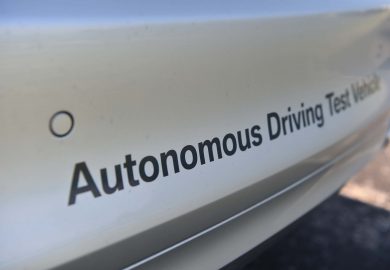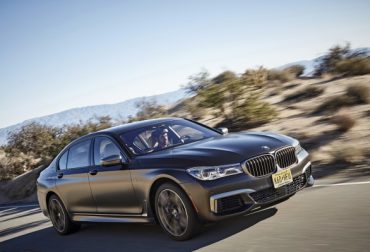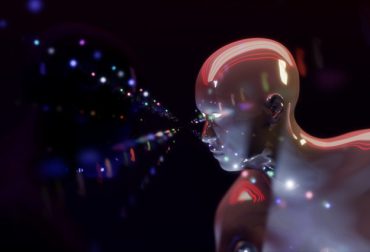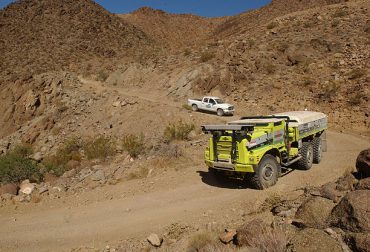Autonomy Today
Was Uber Pushing Too Hard?
On March 19, 2018, one of Uber's self-driving cars on the roads of Tempe, Arizona, fatally struck a woman crossing the street while walking her bicycle. Many people to question whether Uber was pushing its self-driving car technology too hard and too fast.
Detroit’s American Center for Mobility
Located just outside of Detroit, close to Ypsilanti on the west side, the American Center for Mobility aims to be the premier testing facility for autonomous cars.
Who Is Responsible in a Self-Driving Car Accident?
When a self-driving car accident does happen, who is responsible? Is it the human who is behind the wheel, if there is one? Or does the responsibility lie with the developers who put the autonomous car on the road?
Self-Driving Cars and Motion Sickness
Autonomous cars are on the verge of entering America's roadways on a massive scale, but they may cause mass amounts of motion sickness.
The Dirty Problem with Self-Driving Cars
The automotive industry is on the cusp of transitioning fully autonomous cars from the laboratory to customers in the real world. However, one of the main factors delaying the rollout of fully autonomous cars is the challenge of keeping the sensors clean.
Lessons from Self-Flying Planes
Some of the technology and lessons learned in self-flying planes could also be applicable to autonomous cars.
Hyundai Nexo
Hyundai debuted the prototype of the Nexo at the January 8, 2018 Consumer Electronics Show. The Nexo is a sports utility vehicle with a crossover design that is powered by a hydrogen fuel cell. A hydrogen fuel cell uses hydrogen as the source of power.
Chevrolet Volt
The Chevrolet Volt is a plug-in hybrid car two available Driver Confidence packages that add semi-autonomous features to the Volt.
Toyota Corolla
The 2018 Toyota Corollas are outfitted with standard Toyota Safety Sense Technology, which is a proprietary software that boosts its semi-autonomous safety feature.
Infiniti Q50
Recently, Nissan tested an Infiniti (Nissan’s line of luxury vehicles) Q50 autonomous car on the streets of Tokyo. The prototype had an advanced ProPILOT system with Level 4 autonomy, which means that it required minimal intervention from the driver.
Lexus LS
When Toyota unveiled its new-generation 2018 Lexus LS at the Tokyo Motor Show this past June, the auto manufacturer seemed determined to downplay the new vehicle’s autonomous and semi-autonomous features. In the wake of mishaps regarding test models of other self-driving cars, the company understandably wants to focus on safety first.
Genesis G80
The Genesis G80 is a luxury car produced by Hyundai's Genesis brand line. It is a four-door sedan that seats up to five people. The G80 was first available in 2017, and it began production in 2016. It is available in two trim levels, including base and sport.
Volvo S90
The new Volvo S90 is a Level 2 autonomous car, which means that it has partial automation. This sleek sedan includes the new Volvo Pilot Assist II technology.
BMW 7 Series
The BMW 7 Series is a full-size luxury sedan that has been in production since 1977. By 2018, it had reached its sixth generation of design updates.
Chrysler Pacifica
Is it possible for a family van to be accommodating yet still cutting-edge cool? With the 2018 Chrysler Pacifica, it is. This minivan is loaded with standard and extra autonomous driving features ideal for families that need seating for up to eight.
2018 Nissan Leaf
The Nissan Leaf electric vehicle has received an all-new look for the 2018 model year. With this makeover comes the option for a brand-new Leaf feature: ProPilot Assist, a set of self-driving car capabilities.
Honda Sensing
Everyday drivers don't yet have access to a fully self-driving car, but Honda Sensing technology is helping move everyone a little closer to that reality. Honda Sensing is a high-tech suite of autonomous car features designed to help drivers stay alert and arrive safely at their destinations.
Audi A8
The 2019 Audi A8 continues the brand's legacy of luxury by offering intelligent technology that allows the car to drive itself in certain conditions. This partially self-driving car can also park itself and intelligently adjust its suspension for potholes and bumps.
Cadillac CT6
The Cadillac CT6, which stands for "Cadillac Touring 6," is a full-size luxury car that offers cutting edge semi-autonomous features. As part of Cadillac's aim to offer a range of interior features, the CT6 is available in a wide variety of trim levels.
Tesla’s Auto Pilot
Autonomous technology promises the reality of self-driving cars on city streets within a couple of years. However, Tesla is running ahead of the pack with its Autopilot program.
Volvo XC60
As part of its total overhaul for 2018, the Volvo XC60 comes with a bevy of semi-autonomous features designed to improve passenger safety.
BMW 5 Series
Autonomous cars are coming. In many places, they are there already in both Level 4 and Level 5 varieties. The BMW 5-series isn't at those levels yet, but the company's newest mid-range cars have several features that hint tantalizingly at the future to come.
Mercedes Benz E-Class with Drive Pilot
As Mercedes-Benz prepared to roll out its 2016 E-Class line, the company started talking publicly about Drive Pilot, its name for a new line of intelligent safety features. Drivers who have purchased E-Class vehicles since 2016 have been among the first to try Mercedes' self-driving car technologies.
Machine Learning
Self-driving cars are quickly becoming a part of our everyday world. The idea of a car that drives itself still seems like a fantasy. What is the magic that makes this possible?
The DARPA Grand Challenge
The lessons learned, and the ideas sparked by these competitions, have influenced the development of self-driving cars in ways that are hard to quantify.
Levels of Autonomy
Self-driving cars are increasingly being tested, and before long, fully autonomous vehicles will be available. Already, many car manufacturers have introduced autonomous features in existing models.
Do human drivers need to be replaced?
With artificial intelligence entering the mainstream and efforts by various companies to replace human drivers with self-driving cars, the question many seem to ask is: Are human beings really that bad at driving?
Federal Self-Driving Car Regulations
Self-driving cars are being produced by more manufacturers and used for more purposes as the technology grows and becomes more adept at navigating the complexities of the road. While technology companies are working together with automotive manufacturers to perfect the technology, the law must also keep pace.

















































